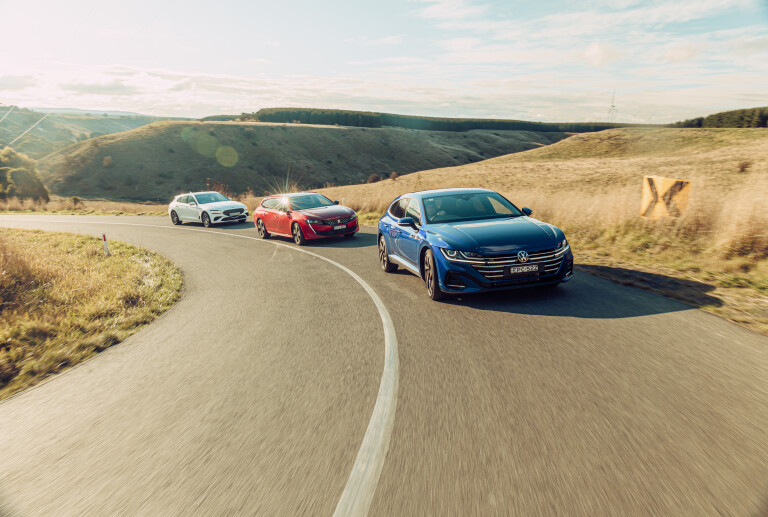
Is the humble station wagon making a comeback in 2022?
The Germans understand it. Cast an eye over the new-car sales figures of our Teutonic counterparts and you’ll notice a strange anomaly: wagons account for 17 per cent of their total sales. Dig a little deeper and the stats get even more interesting. Single out the Mercedes-Benz C-Class, for example, and you’ll discover that two out of every three cars sold is the ‘estate variant’.
That’s a phenomenal stat but also one that’s easy to fathom. Want a car that can seat five, is a tidier handler than most SUVs and has room for dogs, bags and ski gear? Buy a wagon. Aussies used to get it, too – who else grew up with a station wagon in the driveway? – but then the SUV arrived and wagon sales didn’t so much drop. They nosedived.
But, and I barely want to whisper it in case it somehow jinxes things, is the humble station wagon making a comeback in 2022? Not on the sales charts, obviously – the ‘long roof’ is still very much a niche player Down Under – but there seem to be more wagons on sale now than we’ve had in years.
| Click any photo in this story to see our full comparison gallery of the stylish Arteon Shooting Brake, G70 Shooting Brake and Peugeot 508 Sportswagon! |
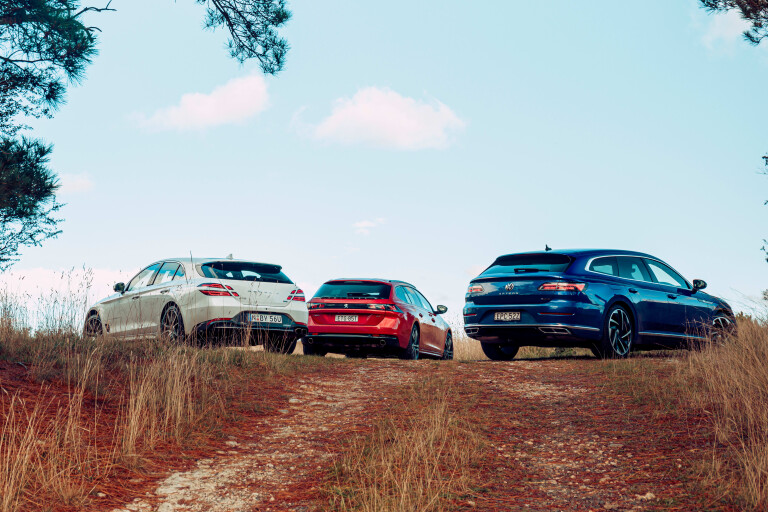
Subaru has revived the WRX wagon. BMW has revealed a new M3 Touring. A fresh Golf R wagon has just launched locally, there’s the excellent Passat wagon and Skoda has the Superb and Octavia. And if you really want to terrify your Labrador with a practical car infused with supercar performance, you can buy an Audi RS6, Porsche Panamera Cross Turismo or Alpina B5 Touring.
And then we have these three. Of all the new wagons on sale, this trio perhaps best encapsulate the unique appeal of buying a wagon in 2022. They’re relatively large so they major on room and boot space, they aren’t eye-wateringly expensive so are mostly attainable for families considering a highly specced mainstream SUV, and they all major on style.
See the VW’s sharp creases, the Pug’s white fangs and the classic cab-back/rear-drive proportions of the Genesis? This is quite the handsome trio. Question is, should you consider one over an SUV? Spoiler alert: yes. And if so, which one’s best?

This is quite the handsome trio. Question is, should you consider one over an SUV? Spoiler alert: yes. And if so, which one’s best?
Price and equipment
Intriguingly, for all their similarities, this group of wagons is also surprisingly diverse. We have a mix of driven axles (front in the Pug, rear in the Genesis and both in the VW), a virtual gulf in the level of performance on tap (5.6sec 0-100km/h in the VW plays 8.6 in the Peugeot with the Genesis sandwiched between) and a sizeable discrepancy when it comes to price.
Want to get the most bang for your buck? Go for the Peugeot.
With a starting price of $61,940 before on-road costs it’s by far the most affordable wagon in this test, but it never feels like a cut-price offering. In fact, slip inside the 508 and it actually feels the most expensive and special.
The cabin design is modern and cutting edge and the mix of materials is genuinely premium: supple Nappa leather on diamond-stitched seats, soft-touch rubber on the dash with a dog-nose finish and faux carbon for the inlays on the dash and doors. And you can park those jokes about dodgy French build quality; the 508 is nicely screwed together with nary a squeak or rattle.

It goes toe-to-toe with the others for kerbside appeal, too, thanks to its attractive exterior design, frameless doors and 19-inch wheels shod with premium Michelin Pilot Sport 4 rubber (which also features on the Genesis).
And there’s nothing in it on the tech front. All three wagons boast parking sensors front and rear, a 360-degree surround view camera and LED head- and tail-lights. About the only thing the Pug misses out on equipment wise is in the headlight department; both the Arteon and G70 feature Matrix technology that can mask out oncoming traffic.
So outright value is on the Peugeot’s side but if it’s eye-catching looks you’re chasing, it’s hard to go past the Arteon.
Seemingly punched out of a machine that specialises in creases so sharp they look as though they could cut your finger, VW’s svelte Arteon ‘shooting brake’ starts at $70,740 before on-road costs.
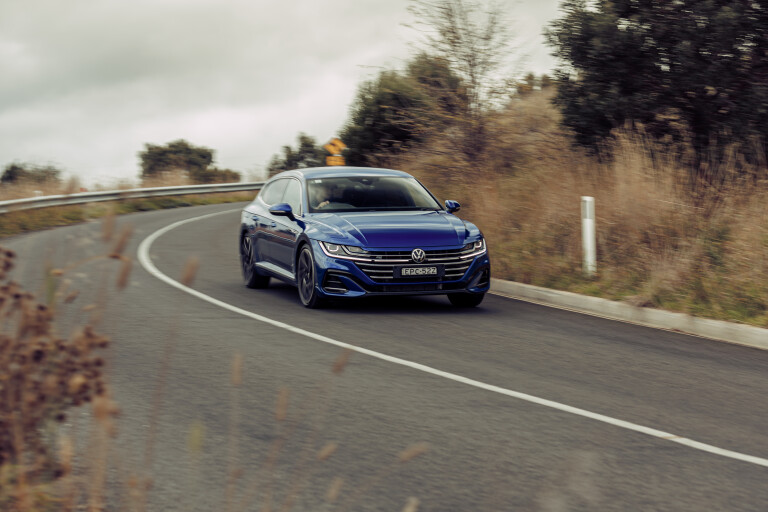
It really is a dramatic thing to behold. Chiselled, tautly proportioned and festooned with an eye-catching LED light signature that extends, like a moustache, below the central VW badge. It teeters on the edge of being overwrought yet neatly manages to look chic rather than overdone.
Like the Pug, the Arteon features pillarless doors but it dials up the visual theatrics with a clamshell bonnet and larger 20-inch wheels wrapped in Pirelli P Zeros. It’s also the biggest of this group dimensionally, although it hides its visual mass convincingly. The fake exhaust outlets, though, aren’t to our taste…
It’s the Genesis that’s the hardest sell on the value front.
At $79,990 before on-road costs, it’s a sizeable step up from the Arteon and a whopping $17,000 more than the 508.
For that price, you might expect the Genesis to be armed with the brand’s punchy 3.5-litre twin-turbo V6 or the 3.3-litre V6 used in the Kia Stinger but no, like the other two on test, the Genesis only has four cylinders under the bonnet. It also rides on passive suspension, where the other two score adaptive dampers.

Looks sharp, though, thanks to classic rear-drive proportions and a long bonnet with a stretched axle-to-dash ratio. And the Genesis does hit back with five years' free servicing (genuinely useful, that) and a few equipment niceties that are missing from the others.
All three of this trio are bursting with standard equipment including heated leather seats with electric adjustment, Apple CarPlay/Android Auto, large infotainment displays, digital instruments and premium audio systems. But on each front, the G70 offers incremental improvements.
It has the largest central screen (10.25 inches vs 10.0 inches in the Pug and 9.2 inches for the VW), its seats offer ventilation as well as heating and are 16-way adjustable, you gain a sunroof as standard, and the Lexicon sound system has 15 speakers where the others only offer 10 (plus a subwoofer in the VW).
| Infotainment | 2022 Volkswagen Arteon 206 TSI | 2022 Peugeot 508 GT wagon | Genesis G70 Shooting Brake |
|---|---|---|---|
| Screen size | 9.2-inch | 10-inch | 10.25-inch |
| Apple CarPlay/Droid auto | Yes, wireless | Yes, wired | Yes, wired |
| Digital dash | 10.25-inch | 12.3-inch | 12.3-inch |
| Sound system | Harman/Kardon 10 speaker + sub | Focal 10-speaker | Lexicon 15 speaker |
| HUD | Y | N | N |
| Wireless charging | Y | Y | Y |

The G70 trumps them on the safety front, too. All three cars feature AEB, lane-keep assist, blind-spot detection and speed-sign recognition but the Genesis also features rear occupant alert and has the most airbags thanks to the inclusion of one between the front passengers, which takes its total to 10.
Peugeots offers the weakest safety credentials as the 508 misses out on rear cross-traffic alert, which is standard on the VW and Genesis, and it only has six airbags. Still, all three wagons boast five-star safety ratings from ANCAP.
Comfort and space
Okay let’s talk back-seat room and boot space. Of all the battlegrounds in this test, this is arguably the most important for a wagon. And on both fronts, the VW is a clear winner. Measuring 4866mm long, the Arteon is 76mm and 181mm longer than the Pug and G70 respectively and it fully exploits its dimensional advantage.
| BOOT SPACE | 2022 Volkswagen Arteon 206 TSI | 2022 Peugeot 508 GT wagon | Genesis G70 Shooting Brake |
|---|---|---|---|
| rear seats up | 565L | 530L | 465L (VDA) |
| rear seats down | 1632L | 1780L | No official figure |
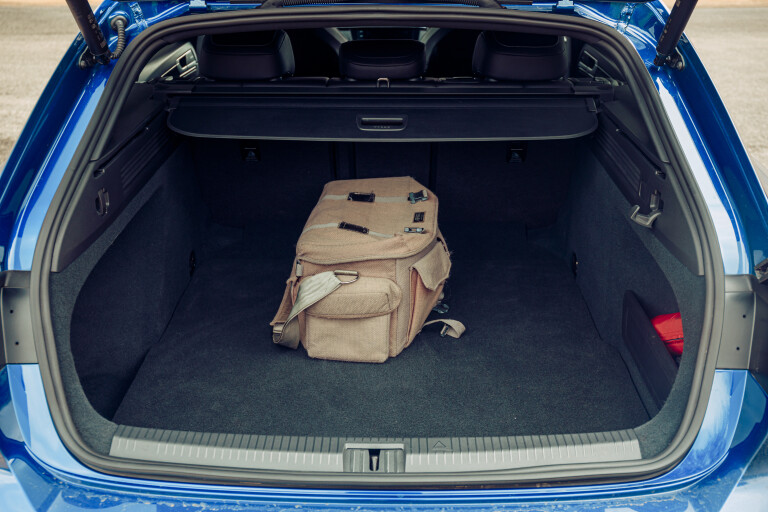
Crack open the auto tailgate and you’ll find 565 litres of boot capacity, which trumps the Pug’s 530L and smashes the G70’s offering of 465L, but it’s not just the sheer size of the Arteon’s boot that impresses. It’s the only one to offer a full-size alloy spare beneath the boot floor (top marks, VW!) and the luggage bay itself is deep, long and devoid of wheel arch intrusions.
A ski port is provided for loading longer items and there’s loads of amenity back here. Buyers score a retractable cargo blind, luggage net, twin bag hooks, two lights and four tie-down points.
The sense of space continues in the back seat. Spy the Arteon’s rakish roofline and you might think rear passengers will be tight on headroom but slip inside and you’ll discover the Arteon’s second row verges on limousine-like.
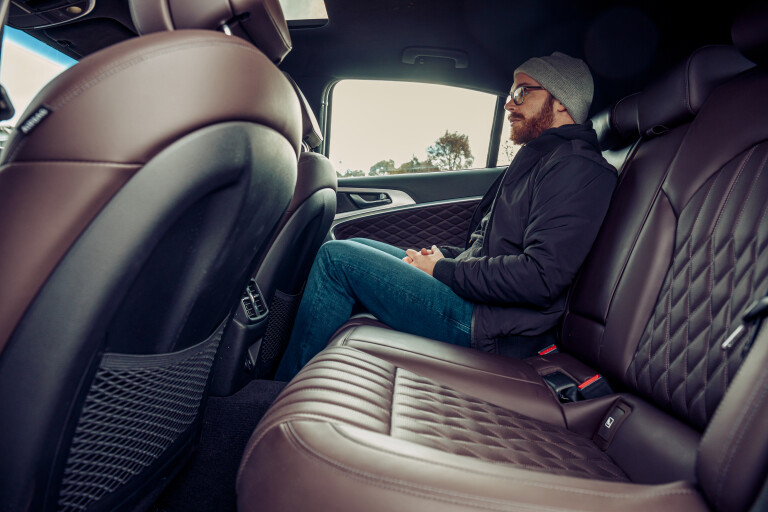
Knee, toe and headroom are all ample for six-foot adults and the seat itself is surprisingly comfortable thanks to a natural backrest angle and a deep-set cushion with decent under-thigh support.
Facing the prospect of a long trip in the backseat of this group? Make a beeline for the VW. Heated outboard seats, twin rear air vents, dual ISOFIX anchor points, tri-zone climate control and large door pockets all feature but there are a few missteps worth pointing out, too.
There’s only one USB-C outlet in the back, for example, so only one of your kids can charge a device. And for all its amazing sense of space, the Arteon’s near impenetrable privacy glass and huge black leather front bucket seats mean the rear bench can feel dark and gloomy.
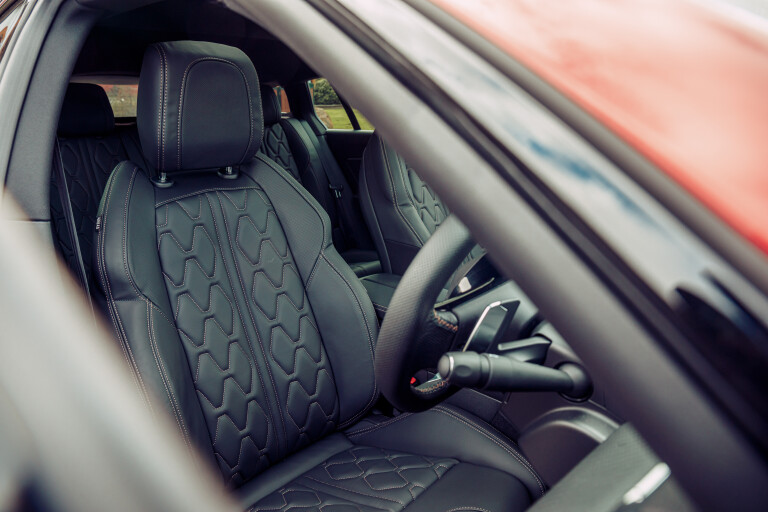
Quality also takes a slight step backwards compared with the front seats due to harder plastics on the door cards, but as a wagon, the Arteon offers the most of this trio when it comes to lugging around people and things.
The Peugeot comes in a close second. It might trail the VW, just, for boot capacity when both rows of seats are in use but drop the second row and the advantage swings the other way. The 508 has 1780L of load-lugging ability with the rear seat folded, which trumps the Arteon’s 1632L, and the Pug also has a slim advantage in the utility stakes.
Its boot opening is slightly wider than the VW’s and the 508 also has the advantage of four moveable tie-down hooks that slide on rails embedded into the boot floor.

The 508’s second row is airier and easier to see out of, too, thanks to pronounced stadium seating, slimmer front seats and a low window line. There are also twin rear USB-A ports and the transmission tunnel isn’t as intrusive as the VW’s, which makes it easier to seat three adults across the rear bench.
You don’t get quite the same amount of room, however. Knee room is tighter and because the roofline tapers in slightly, the back seat feels narrower and a few passengers bumped their heads during entry/egress.
The seat cushion also isn’t as deep, which makes it feel like you’re sitting on the 508’s rear bench rather than in it. But even with its slightly squishier dimensions, the Pug feels palatial compared with the Genesis.
Sadly for the G70, it’s a distant third in the practicality stakes. Its more compact footprint means trying to sit behind my own driving position is a struggle. I’m short on toe room, my knees press uncomfortably into the back of the driver’s seat and the roofline sweeps in even more aggressively than the Peugeot, so headroom feels quite tight.
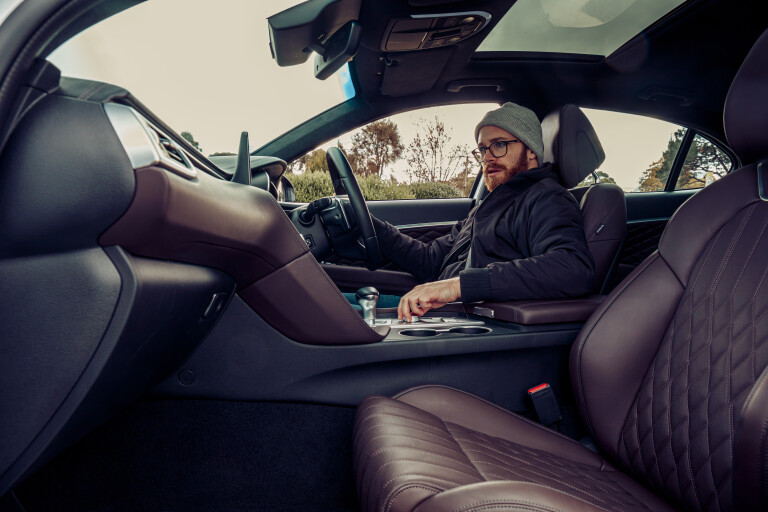
The seat itself is comfortable but the base of the outside pews is quite low, which limits under-thigh support for passengers with long legs. And the opposite is true of the middle seat, which is raised to such a level that my head brushes the ceiling.
Rear storage is also a weakness due to the slimmest door bins of this trio and the boot just isn’t in the same league. Officially Genesis says it offers 465L but a high boot floor and narrow opening means that when you eyeball it next to the cavernous Arteon, it looks like significantly less than that figure.
So it’s been an inauspicious start for the most expensive car in this group test. Here’s hoping the Genesis can redeem itself by playing its strongest hand: how it drives.

On the road
| 2022 Volkswagen Arteon 206 TSI | 2022 Peugeot 508 GT wagon | Genesis G70 Shooting Brake | |
|---|---|---|---|
| Engine | 1984cc 4cyl, dohc, 16v, turbo | 1598cc 4cyl, dohc, 16v, turbo | 1998cc 4cyl, dohc, 16v, turbo |
| Power | 206kW @ 4950-6600rpm | 165kW @ 5500rpm | 179kW @ 6200rpm |
| Torque | 400Nm @ 2000-4950 | 300 @ 2750rpm | 353Nm @ 1400-3500rpm |
| 0-100km/h | 5.6sec (claimed) | 8.2sec (claimed) | 6.1sec (claimed) |
| Transmission | 7-speed dual-clutch | 8-speed automatic | 8-speed automatic |
| Fuel consumption | 10.59L/100km (tested) | 11.54L/100km (tested) | 11.78L/100km (tested) |
There’s lots to like about the G70’s dynamic potential on paper. It may only pack 2.0-litres and four cylinders but it’s rear-drive, has a limited-slip differential, uses staggered tyres (225/40 ZR19 Michelins up front, 255/35 ZR19 out back) and it boasts a brake package supplied by Brembo.
Its steering (2.5 turns lock to lock) is also well weighted and accurate and in day-to-day driving, the chassis tune strikes a nice balance between control and comfort.
Unlike the other two, the G70 uses passive damping so bump absorption and body control remain unchanged as you cycle through the drive modes but the default set-up is nicely judged.
There’s decent compliance over rough sections and when driven at a moderate pace the car feels eager and controlled.

Hustle the G70 up a twisting section of road, though, and things unravel a touch. The front axle can feel a smidge soft and lazy through tighter turns so you find yourself managing body roll on the way into corners instead of exploiting the G70’s rear-drive character on the way out. Not that there’s much performance on tap to overwhelm the rear tyres…
The 179kW/353Nm 2.0-litre certainly sounds aggressive thanks to a heavy-handed artificial soundtrack that’s piped into the cabin – dial in Sport and Sport+ mode and it actually sounds like a V8! – but the engine never delivers the potency its acoustics promise.
Of this trio, the Genesis actually has the weakest power-to-weight ratio, with its 105kW/tonne trailing the lightweight 508 (115kW/tonne) and powerful VW (120kW/tonne). The G70 will slide, and it’s actually quite rewarding at the limit, but you really have to commit and work hard to extract its best.
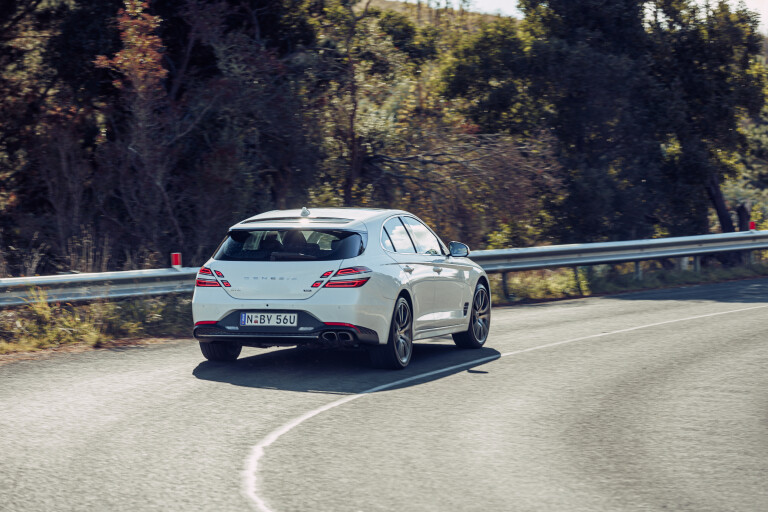
At least the driving position is excellent. The seat itself is comfortable and offers great support, and the cabin design makes a decent fist of feeling premium, too.
The ergonomics are sound, the central screen is crisp and quick to respond, there’s a head-up display and Hyundai’s blind-spot monitor, which pops up on the digital dash when you use the indicators, also features and is genuinely useful.
And hallelujah for physical climate control buttons! Unlike the Peugeot and VW, which force you to dive into the central touchscreen or fumble with touch-sensitive sliders to change the temperature or fan speed, the G70 is a shining example of the benefits of keeping things simple.
There are a few niggles, though. Hard plastics aren’t that tricky to find, our car had an annoying creak/rattle near the sunroof and Apple CarPlay and Android Auto can only be fired up with a wired connection, despite there being a wireless charging pad. But these are minor niggles in what is ultimately a polished, premium and handsome wagon.
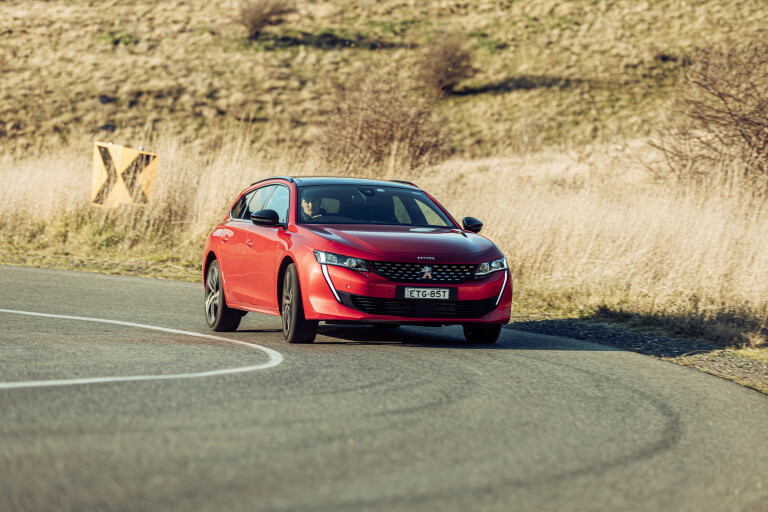
It’s just a shame it can’t compete with the other two in this test for value, rear-seat room or boot space. The G70 is a likeable thing but in the context of this comparison, it finishes last. It’s a shame because wagon buyers should be an easy sell for style-driven challenger brands looking to attract discerning, broad-minded customers but in a few key areas, the G70 underdelivers.
So far the opposite has been true of the Peugeot. It has overachieved for value and cabin space but it only takes a few corners to realise it’s by far the least sporty of this trio. With 165kW/300Nm on tap from a smooth and eager 1.6-litre four-pot, the 508 lacks the firepower and acoustic personality of the G70 and Arteon.
Its widespread gear ratios also contribute to a dearth of urgency and where the other two get better dynamically the harder you push, the 508 feels happiest at about eight tenths.
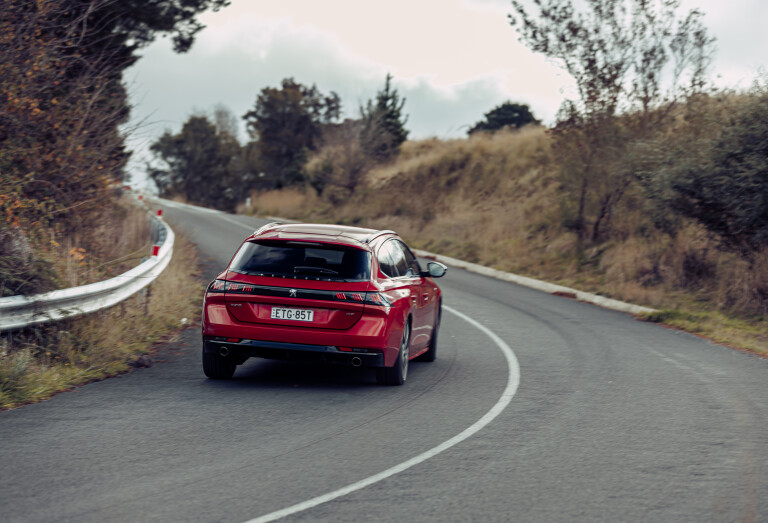
Keep things dialled back a touch and the Pug is a beautifully fluid wagon to drive swiftly. It feels light on its feet, the steering is accurate, the cabin is the quietest and most refined over coarse surfaces, and there’s a suppleness to the suspension that’s lacking in the other two.
Like the Arteon, the 508 is fitted with adaptive dampers that provide a noticeable difference in firmness and body control as you cycle between the drive modes, but even in its most aggressive setting, the 508 never feels flustered or harsh on our challenging road loop. Brilliant turning circle, too, although I’d wager not everyone will gel with its polarising human-machine interface…
To view the digital dial cluster the 508 forces you to drop the steering wheel into its lowest position, which feels odd for drivers who prefer their wheel high and close, and the wheel itself is disarmingly small. “It feels like you’re steering an enormous car with a bagel in your lap,” remarked a member of our road-testing team.

There are some other interior idiosyncrasies to overcome, too. Charging or connecting your phone is a bit of a palaver because the dual USB ports and wireless charging pad are hidden away in a hard-to-reach cubby beneath the centre console.
Reversing camera resolution is also disappointingly poor and while the finger-like hotkeys below the centre screen provide useful shortcuts, some of the system’s menus can be a touch confusing. Oh and Apple CarPlay doesn’t extend to the full width of the 10.0-inch screen, and the Pug is the only one of this trio not to have a head-up display. Still, it’s been a strong showing from the 508 and it romps home to second place.
Which leaves the Arteon. Push all three wagons up a challenging hill climb and it’s the VW that will reach the finish line first. It has the punchiest engine, the strongest brakes and thanks to the surety of its all-wheel-drive system, the grippiest chassis. It’s surprisingly athletic, too, for a car approaching five metres in length.
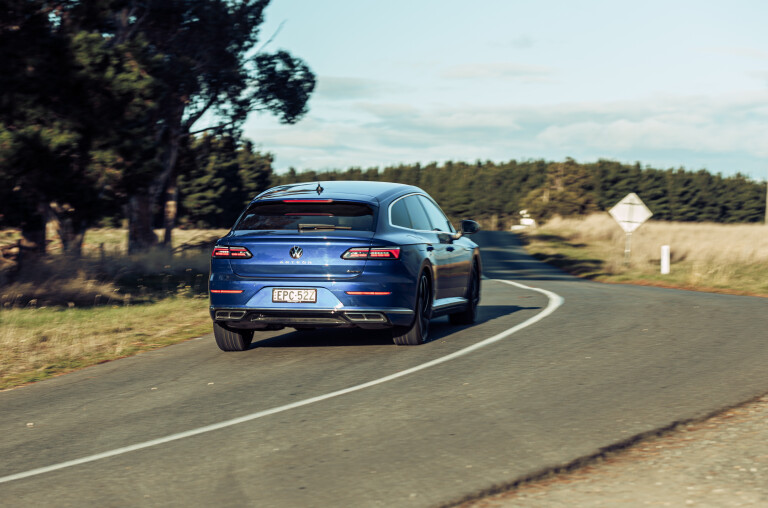
The steering (2.2 turns lock to lock) is light and accurate and body control is kept rigidly in check thanks to a dynamic damping system with 14 stages of stiffness to explore.
The VW rides on 20-inch wheels compared with 19s on the other two and while there’s no escaping the fact it’s the firmest of this group, especially over sharp imperfections, it never feels jarring or unpleasant.
Its powertrain is impressive at speed, too. VW’s venerable EA888 revs cleanly to its 6500rpm redline and the seven-speed dual-clutch is quick and decisive. In regular driving, however, there’s a lethargic side to the VW that can catch you out.
Even in Sport mode, the engine and transmission calibration feels overly focused on fuel saving and is reluctant to shift down through the gears when you try to slot into gaps in traffic.
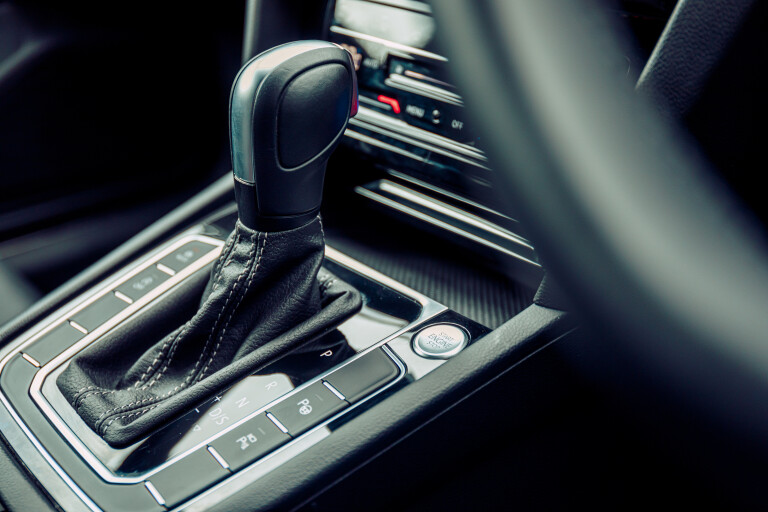
Another downside is that those flashy 20-inch alloys mean the VW suffers from the most intrusive tyre roar of this group. And some of the cabin tech also feels like a sideways step…
VW seems to be on a mission to move everything it can into a touchscreen menu and while the Arteon doesn’t suffer from this minimalist approach quite so badly as some other models, like the new Golf, there are still some issues to contend with.
Touchpads with haptic feedback replace conventional buttons on the steering wheel spokes and while they look great, they simply aren’t as intuitive to use. Same goes for the touch-sensitive sliders that are used to change the climate control’s temperature or fan speed; impressive to swipe in a showroom but tricky to get right on the move.
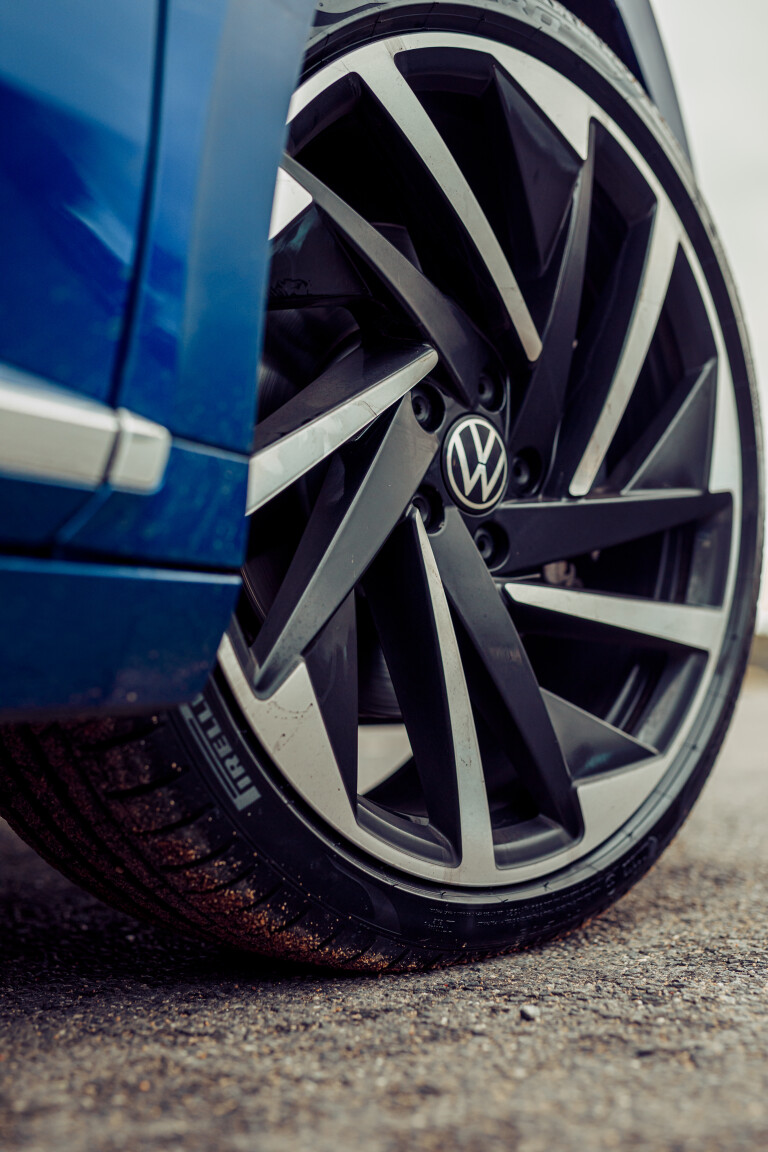
Still, the rest of the cabin exudes quality. The materials mix is high, the resolution and functionality of the digital displays is excellent and the seating position is natural from comfortable and heavily bolstered sports seats.
All of which feeds into the conclusion...
VERDICT
The Arteon is a brilliant all-rounder
It’s sleek, quick, turns the most heads and despite being the most powerful car here, it also drank the least fuel over our test loop: 10.6L/100km plays 11.5L for the Pug and 11.8L for the Genesis.
And as a wagon, it offers the biggest back seat and the largest boot. It’s a clear winner in this group test but truly, if you were to choose any of these wagons over a conventional SUV, there are no real losers.
The humble station wagon might still be a niche player on the Aussie sales charts but for those select few who ‘get it’, we doubt any of this trio will disappoint.
If you were to choose any of these wagons over a conventional SUV, there are no real losers.

Specifications
| 2022 Volkswagen Arteon 206 TSI | 2022 Peugeot 508 GT wagon | Genesis G70 Shooting Brake | |
|---|---|---|---|
| Body | 5-door, 5-seat wagon | 5-door, 5-seat wagon | 5-door, 5-seat wagon |
| Drive | All-wheel drive | Front-wheel drive | Rear-wheel drive |
| Engine | 1984cc 4cyl, dohc, 16v, turbo | 1598cc 4cyl, dohc, 16v, turbo | 1998cc 4cyl, dohc, 16v, turbo |
| Compression | 9.3:1 | 10.1:1 | |
| Bore/stroke | 82.5mm x 92.8mm | 86mm x 86mm | |
| Power | 206kW @ 4950-6600rpm | 165kW @ 5500rpm | 179kW @ 6200rpm |
| Torque | 400Nm @ 2000-4950 | 300 @ 2750rpm | 353Nm @ 1400-3500rpm |
| 0-100km/h | 5.6sec (claimed) | 8.2sec (claimed) | 6.1sec (claimed) |
| Transmission | 7-speed dual-clutch | 8-speed automatic | 8-speed automatic |
| Weight | 1717 (tare) | 1430kg | 1699kg (kerb) |
| Fuel consumption | 10.59L/100km (tested) | 11.54L/100km (tested) | 11.78L/100km (tested) |
| Front suspension | MacPherson struts, coil springs, adaptive dampers, anti-roll bar | Struts, coil springs, adaptive dampers, anti-roll bar | MacPherson struts, coil springs, anti-roll bar |
| Rear suspension | Multi-links, coil springs, adaptive dampers, anti-roll bar | Multi-links, coil springs, adaptive dampers, anti-roll bar | Multi-links, coil sprngs, anti-roll bar |
| L/W/H | 4866/1871/1447mm | 4790/1860/1420 | 4685/1850/1400 |
| Wheelbase | 2840mm | 2800mm | 2835mm |
| Brakes | Ventilated discs | Ventilated discs (front) solid discs (rear) | Ventilated discs |
| Tyres | Pirelli P Zero 245/35 R20 (f/r) | Michelin Pilot sport 4 235/40 ZR19 (f/r) | Michelin Pilot Sport 4 225/45 ZR19 (f) 255/35 ZR19 (r) |
| Wheels | 20-inch alloy wheels | 19-inch alloy wheels | 19-inch alloy wheels |
| Price | $70,740 | $61,940 | $79,000 |
| Boot space | 565L/1632L | 530L/1780L | 465L (VDA) |
| Warranty | 5yr/unlimited | 5yr/unlimited | 5yr/unlimited |
| Servicing | 12months/15,000km | 12 months/20,000km | 5yr complimentary servicing |
| P2W | 120kW/tonne | 115kW/tonne | 105kW/tonne |



COMMENTS